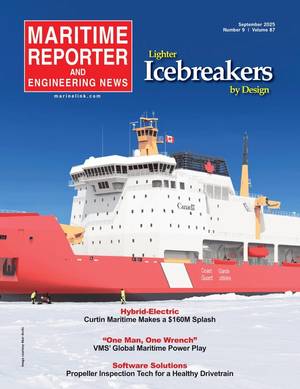Essex Demonstrates Sustained Mission Readiness
The multi-purpose amphibious assault ship USS Essex (LHD 2) successfully completed a three-day evaluation, Unit Level Training Assessment-Sustainment (ULTRA-S) July 22, while returning from the U.S and Australian-led Exercise Talisman Saber 2007. A team of inspectors from the Afloat Training Group Western Pacific (ATGWP) arrived, via helicopter from Guam, to evaluate 16 mission areas including engineering, damage control, seamanship, combat systems, amphibious warfare, medical, aviation and force protection/anti-terrorism.
ATGWP also reviewed Essex's Maintenance Material Management (3M) program to ensure that material readiness standards and maintenance practices continued to meet standards. “I am extremely proud of the hard work, exceptional performance and commitment to sustained excellence that our crew displayed during ULTRA-S,” said Capt. Brian T. Donegan, Essex commanding officer. "Most importantly, I am pleased that Essex was able to achieve this level of performance by integrating realistic and challenging training into our daily routine."
As part of the Forward Deployed Naval Forces, Essex is obligated to maintain peak operational readiness at all times, added Donegan. ULTRA-S is designed to evaluate the ability of the ship's training team to effectively train the crew and then accurately assess the crew's proficiency in each mission area. The ship's training team is initially certified as capable of training the crew, without outside assistance, during an event called the Final Evaluation Problem (FEP). If the evaluations are within 10 percent of the highest markings, the ship is certified as not only able to provide basic training to the crew, but also as capable of sustaining mission readiness through continued training and accurate self assessment.
“'Can we sustain the standards established at the Final Evaluation Problem certification over time?' Essex successfully demonstrated that fact,” said Lt. Cmdr. Diane Quattrone, Essex training officer. “By conducting School of the Ship [classroom training] combined with drills six days a week, Essex was able to meet and exceed the standards established in the Surface Force Training Manual.” Other training leaders agreed.
“All the hard work and training paid off,” stated Lt. Panjgonie, Essex ATG training liaison officer. "This is the first ship that ATG has seen that certified in all warfare areas demonstrated at ULTRA-S." Essex Command Master Chief William T. Etherton felt confident the crew was more than ready to impress ATGWP staff with their level of knowledge and ability to apply it in simulated and real life mission scenarios. "Our Sailors operate equipment and stand watch every day underway," said Etherton. "They are well trained, and qualified with the skillsets they need to respond to situations as they occur."
Sailors aboard Essex echoed Etherton, stating for the most part that they were confident their training would carry them through the evaluation successfully and without any problem areas. “Our command training teams were being evaluated by ATG to ensure that they are correctly training the crew,” said Hull Technician Chief (SW) David Forest. “We successfully finished FEP a few months ago and added new scenarios for the damage control teams. We trained as much as possible in a variety of areas like main space fires and damage to the ship.” In all areas, including 3M, Sailors were pushed to meet the highest standards.
“This is just a look at where the ships training is and ensures that we are on track. For 3M we had several workcenters with perfect scores during reviews, spot checks and equipment validations,” added Damage Controlman Chief (SW/AW) Mike Kelsey, Essex 3M coordinator. Success during ULTRA-S is largely based on how accurately the ship's training team evaluates drills. ATGWP observes and evaluates the drills then debriefs with the training teams. “This is the first time that a ship was this successful in the evaluation process,” stated Capt. Carl Carpenter, ATGWP commander, during the ULTRA-S outbrief.
With ULTRA-S successfully completed, Essex returned to Sasebo, Japan, for a period of maintenance, repairs and upgrades. Essex is the Navy's only forward-deployed amphibious assault ship and serves Task Force 76, the Navy’s only forward-deployed amphibious force. Task Force 76 is headquartered at White Beach Naval Facility, Okinawa, Japan, with an operating detachment in Sasebo, Japan.















